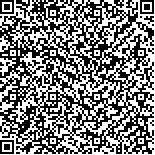马联杰,顾旭东,李岩,等.动态失稳训练对脑卒中患者姿势控制能力、平衡与步行功能的影响[J].中华物理医学与康复杂志,2023,45(3):210-215
扫码阅读全文

|
| 动态失稳训练对脑卒中患者姿势控制能力、平衡与步行功能的影响 |
|
| |
| DOI:10.3760/cma.j.issn.0254-1424.2023.03.004 |
| 中文关键词: 脑卒中 姿势控制 平衡功能 表面肌电图 |
| 英文关键词: Stroke Postural control Balance Surface electromyography Walking ability |
| 基金项目:浙江省公益技术研究计划项目(LGF21H170004);嘉兴市公益性研究计划项目(2022AY30007);嘉兴市科技计划项目(2021AD30122) |
|
| 摘要点击次数: 5123 |
| 全文下载次数: 4927 |
| 中文摘要: |
| 目的 观察动态失稳训练对脑卒中患者姿势控制、平衡与步行功能的影响。 方法 采用随机数字表法将40例脑卒中患者分为对照组和观察组,每组20例。所有患者均接受常规康复治疗,观察组在此基础上给予动态失稳训练,对照组增加相同时长的常规康复治疗。治疗前、治疗8周后(治疗后),采用表面肌电图(sEMG)检测2组患者双侧股直肌、股二头肌、竖脊肌的表面肌电信号,包括预期姿势调节(APAs)阶段的激活时间和激活强度,补偿姿势调节(CPAs)阶段的激活强度。采用Berg平衡量表(BBS)、Fugl-Meyer运动功能量表(FMA)下肢部分、GaitWatch步态分析系统评估患者的平衡与步行能力。 结果 与对照组治疗后比较,观察组患侧股直肌[(-71.68±2.64)s]、股二头肌[(-90.07±3.65)s]和健侧股二头肌[(-84.31±5.74)s]、竖脊肌[(-67.29±5.04)s]APAs阶段的激活时间提前较多(P<0.05),患侧股直肌[(9.90±0.77)]、竖脊肌[(10.18±0.72)]APAs阶段的激活强度较高(P<0.05)。2组患者治疗后CPAs阶段各肌群的激活强度组间比较,差异无统计学意义(P>0.05)。观察组治疗后BBS评分[(48.80±3.52)分]、下肢FMA评分[(29.20±2.42)分]、步幅[(71.25±4.81)cm]、步速[(70.20±5.00)cm/s]改善优于对照组(P<0.05)。 结论 动态失稳训练联合常规康复训练能进一步改善脑卒中患者的姿势控制能力,促进平衡与步行功能恢复,提高下肢运动功能。 |
| 英文摘要: |
| Objective To observe any effect of dynamic motor instability training on the balance and postural control of stroke survivors. Methods Forty stroke survivors with poor balance were randomly divided into a control group and an observation group, each of 20. In addition to routine rehabilitation, the observation group was given 20 minutes of dynamic motor instability training, 5 days a week for 8 weeks, while the control group underwent routine rehabilitation for the same length of time. Before and after the intervention, surface electromyogram of the rectus femoris, biceps femoris, and erector spinae were recorded during perturbation. Activation time and the intensity of the anticipatory and complementary postural adjustments (APAs and CPAs) were also observed. Balance and lower limb motor functioning were assessed using the Berg balance scale (BBS), the Fugl-Meyer lower extremity assessment (FMA-LE), and GaitWatch analysis. Results After the treatment the average activation time of the rectus femoris, biceps femoris in the affected side and those of the biceps femoris [(-84.31±5.74)s] and erector spinae in the intact side in APAs were all significantly shorter in the observation group than in the control group, while the average activation intensity of the rectus femoris and erector spinae was significantly greater. There was no significant difference in the activation intensity of each muscle group in CPAs after the treatment. After the intervention the average BBS score, FMA-LE score, stride length and walking speed of the observation group all were significantly better than the control group′s averages. Conclusions Supplementing traditional rehabilitation training with dynamic motor instability training can further improve the posture control of stroke survivors and promote recovery of their balance and walking ability. |
|
查看全文
查看/发表评论 下载PDF阅读器 |
| 关闭 |